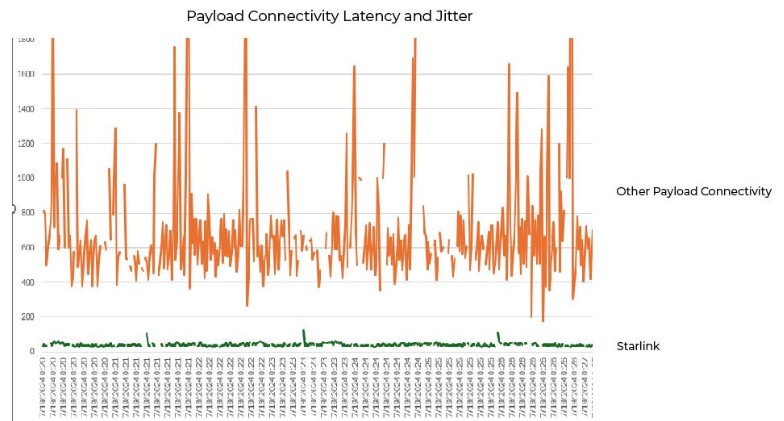In February 2023, uAvionix began testing the first versions of Starlink’s antennas and connectivity, exploring the possibilities for advanced LEO-satellite-based command and control (C2) communications for small UAS. The Starlink results were encouraging, and we have continued our efforts throughout this past year.
As a leading provider of Command, Navigation, and Surveillance technologies for small Uncrewed Aircraft Systems (sUAS), we have consistently promoted multi-modal connectivity solutions to support both assured C2 and high-bandwidth payload communications. By integrating various connectivity methods, we provide path and frequency diversity, ensuring reliable operation everywhere.
Today, uAvionix is pleased to highlight a significant step forward in their integration efforts with the successful completion of test flights using Starlink and uAvionix’s muLTElink airborne radio. The integration work continues their commitment to offering the best possible connectivity solutions for small UAS, and the recent flight tests demonstrated unprecedented connectivity for both C2 and payload communications, delivering data rates in the megabits per second with latencies below 100 milliseconds.

This milestone is an extension of our integration with L-band satellite connectivity solutions that have been implemented across various platforms to ensure assured C2 communications. By introducing Starlink to our connectivity suite, we will enhance our capability to provide both assured C2 and high-bandwidth payload communications, such as streaming video or ISR data, back to the operator. This integration further underscores our dedication to multi-modal solutions that combine path and frequency diversity, a principle we have long championed.
The achievement highlights the potential of Starlink to revolutionize UAS C2 communications and payload backhaul solutions, promising a new era of connectivity for uncrewed aerial systems.
Stay tuned for more updates as we delve into the technical details and comparative performance of the varying connectivity options for sUAS communications. This forthcoming analysis will offer deeper insights into the relative strengths and weaknesses of each connectivity type.
7 August 2024



